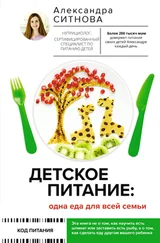4. Oken, E., Radesky, J. S., Wright, R. O., Bellinger, D. C., Amarasiriwardena, C. J., Kleinman, K. P.,… Gillman, M. W. (2008). Maternal fish intake during pregnancy, blood mercury levels, and child cognition at age 3 years in a US cohort. American Journal of Epidemiology, 167 (10), 1171–1181.
5. Silbernagel, S. M., Carpenter, D. O., Gilbert, S. G., Gochfeld, M., Groth, E., Hightower, J. M., & Schiavone, F. M. (2011). Recognizing and preventing overexposure to methylmercury from fish and seafood consumption: Information for physicians. Journal of Toxicology, 2011 , 983072. http://doi.org/10.1155/2011/983072.
6. Easton, M. D. L., Luszniak, D., & Von der Geest, E. (2002). Preliminary examination of contaminant loadings in farmed salmon, wild salmon and commercial salmon feed. Chemosphere, 46 (7), 1053–1074.
Неделя 32. Уважайте право людей быть другими
1. United Nations, Department of Economic and Social Affairs, Population Division (2016). International Migration Report 2015: Highlights (ST/ESA/SER.A/375).
2. Pew Research Center. (2016, March 31). 10 d emographic trends that are shaping the U. S. and the world. http://www.pewresearch.org/fact-tank/2016/03/31/10-demographic-trends-that-are-shaping-the-u-s-and-the-world/ .
3. Gallup. (2017, January 11). In US, more adults identifying as LGBT . http://www.gallup.com/poll/201731/lgbt-identification-rises.aspx.
4. Barak, M., & Levenberg, A. (2016). Flexible thinking in learning: An individual differences measure for learning in technology-enhanced environments. Computers & Education, 99 , 39–52.
5. Hayes, S. C., Luoma, J. B., Bond, F. W., Masuda, A., & Lillis, J. (2006). Acceptance and commitment therapy: Model, processes and outcomes. Behaviour Research and Therapy, 44 (1), 1–25.
6. Kashdan, T. B., & Rottenberg, J. (2010). Psychological flexibility as a fundamental aspect of health. Clinical Psychology Review, 30 (7), 865–878.
7. Hayes, S. C., Luoma, J. B., Bond, F. W., Masuda, A., & Lillis, J. (2006). Acceptance and commitment therapy: Model, processes and outcomes. Behaviour Research and Therapy, 44 (1), 1–25.
8. Martínez-Martí, M. L., & Ruch, W. (2014). Character strengths and well-being across the life span: Data from a representative sample of German-speaking adults living in Switzerland. Frontiers in Psychology, 5 , 1253. http://doi.org/10.3389/fpsyg.2014.01253.
9. Richard, O., McMillan, A., Chadwick, K., & Dwyer, S. (2003). Employing an innovation strategy in racially diverse workforces: Effects on firm performance. Group & Organization Management, 28 (1), 107–126.
10. Bassett-Jones, N. (2005). The paradox of diversity management, creativity and innovation. Creativity and Innovation Management, 14 (2), 169–175.
11. Kreitz, C., Schnuerch, R., Gibbons, H., & Memmert, D. (2015). Some see it, some don’t: Exploring the relation between inattentional blindness and personality factors. PloS One, 10 (5), e0128158.
12. Kelly, D. J., Quinn, P. C., Slater, A. M., Lee, K., Gibson, A., Smith, M.,… Pascalis, O. (2005). Three-month-olds, but not newborns, prefer own-race faces. Developmental Science, 8 (6), F31–F36. http://doi.org/10.1111/j.1467–7687.2005.0434a.x.
13. Metzler, C. (2009). Teaching children about diversity. PBS Parents . http://www.pbs.org/parents/experts/archive/2009/02/teaching-children-about-divers.html.
14. Reischer, E. (2017, February 23). 3 essentials for parents in turbulent times [Web log post, 2nd item]. Retrieved from http://www.drericar.com/blog/.
Неделя 33. Учимся финансовой грамотности
1. Bridges, S., & Disney, R. (2010). Debt and depression. Journal of Health Economics, 29 (3), 388–403.
2. Sweet, E., Nandi, A., Adam, E., & McDade, T. (2013). The high price of debt: Household financial debt and its impact on mental and physical health. Social Science & Medicine, 91 , 94–100. http://doi.org/10.1016/j.socscimed.2013.05.009.
3. Federal Reserve Bank of New York. (May 2017). Quarterly report on household debt and credit. Retrieved from https://www.newyorkfed.org/microeconomics/hhdc.html.
4. Brown, A. M., Collins, J. M., Schmeiser, M. D., & Urban, C. (2014). State mandated financial education and the credit behavior of young adults. Retrieved from http://www.finrafoundation.org/.
5. Kim, J., & Chatterjee, S. (2013). Childhood financial socialization and young adults’ financial management. Journal of Financial Counseling and Planning, 24 (1), 61.
6. Mottola, G. R. (2014, March). The financial capability of young adults — A generational view. Insights: Financial Capability .
Неделя 34. Выходите из зоны комфорта
1. Gross, J., & Rosin, H. (2014, August 6). The shortening leash. Slate . Retrieved from http://www.slate.com/articles/life/family/2014/08/slate_childhood_survey_results_kids_today_have_a_lot_less_freedom_than_their.2.html.
2. Ingraham, C. (2015, April 14). There’s never been a safer time to be a kid in America. Washington Post.
3. Biswas-Diener, R., & Kashdan, T. B. (2013, July 2). What happy people do differently. Psychology Today. Retrieved from https://www.psychologytoday.com/articles/201307/what-happy-people-do-differently.
4. Sandseter, E. B. H., & Kennair, L. E. O. (2011). Children’s risky play from an evolutionary perspective: The anti-phobic effects of thrilling experiences. Evolutionary Psychology, 9 (2), https://doi.org/10.1177/147470491100900212.
5. Poulton, R., Davies, S., Menzies, R. G., Langley, J. D., & Silva, P. A. (1998). Evidence for a non-associative model of the acquisition of a fear of heights. Behaviour Research and Therapy, 36 (5), 537–544.
6. Rosin, H. (2014, April). The overprotected kid. Atlantic. Retrieved from https://www.theatlantic.com/magazine/archive/2014/04/hey-parents-leave-those-kids-alone/358631/.
7. Green, J. (1997). Risk and the construction of social identity: Children’s talk about accidents. Sociology of Health & Illness, 19 (4), 457–479.
8. Gerber, M., & Johnson, A. (2002). Your self-confident baby: How to encourage your child’s natural abilities from the very start. New York, NY: Wiley.
Неделя 35. Долой искусственные добавки
1. Environmental Working Group. (2014, November 12). EWG’s dirty dozen guide to food additives. Retrieved from http://www.ewg.org/research/ewg-s-dirty-dozen-guide-food-additives.
2. Jeong, S. H., Kim, B. Y., Kang, H. G., Ku, H. O., & Cho, J. H. (2005). Effects of butylated hydroxyanisole on the development and functions of reproductive system in rats. Toxicology, 208 (1), 49–62.
3. Oishi, S. (2002). Effects of propyl paraben on the male reproductive system. Food and Chemical Toxicology, 40 (12), 1807–1813.
4. Okubo, T., Yokoyama, Y., Kano, K., & Kano, I. (2001). ER-dependent estrogenic activity of parabens assessed by proliferation of human breast cancer MCF-7 cells and expression of ERα and PR. Food and Chemical Toxicology, 39 (12), 1225–1232.
Читать дальше
Конец ознакомительного отрывка
Купить книгу


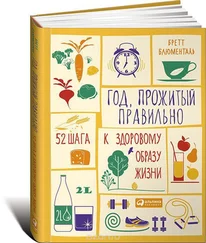
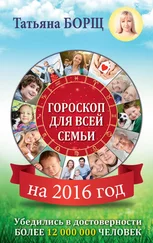
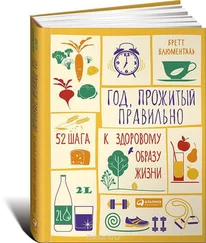
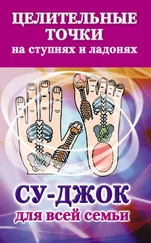
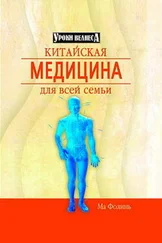
![Лора Гарнетт - Привычка гения [Как одна привычка может полностью изменить вашу работу и вашу жизнь] [litres]](/books/385616/lora-garnett-privychka-geniya-kak-odna-privychka-mozh-thumb.webp)
